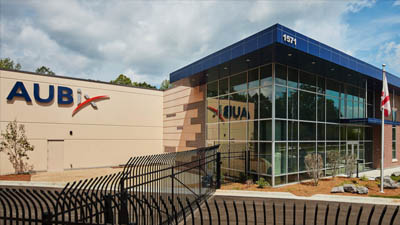 I still recall my first walk-through of a structured cabling installation – an office building with several hundred workstations spread over three floors. During the site inspection, we removed a few ceiling tiles, revealing all manner of cables completely foreign to me. Single- and two-pair shielded cable, various coax and some multi-pair, most of which was run in point-to-point fashion.
I still recall my first walk-through of a structured cabling installation – an office building with several hundred workstations spread over three floors. During the site inspection, we removed a few ceiling tiles, revealing all manner of cables completely foreign to me. Single- and two-pair shielded cable, various coax and some multi-pair, most of which was run in point-to-point fashion.
The adage that “the shortest distance between two points is a straight line” was definitely the theme. The neat cable bundles I had come to expect in the twisted pair cabling world were nowhere to be seen. When I asked the installer what these strange cables were, and why they weren’t part of the structured cabling project, he patiently explained how the facilities network was different from the IT network.
He said building management systems (BMS) used different protocols and ultimately different cable technology. Other applications like security, lighting control and A/V also used different cabling, installed separately and in advance of the IT cabling. He explained how there were multiple installation crews, each running separate cables in a point-to-point fashion, and that ultimately these applications were beyond the scope of a structured cabling project.
CLICK TO TWEET: Practicing What We Preach in a Madrid Smart Building
Much has changed since that site visit nearly two decades ago. The de-facto protocol for LAN networks, i.e. Ethernet, has spread to the facilities side with its low port cost and addressing capability. And with advances to the Power over Ethernet (PoE) standards, a wider range of devices can now be powered and networked via the same twisted pair cable.
Applications such as IP security, access control and even low-voltage lighting have migrated to Ethernet and twisted pair cabling. Unlike traditional desktop connections, they increasingly find their way into the ceiling, replacing the myriad cable types I had seen on my walk-through many years ago. And they are being installed per the structured cabling standards – properly bundled and routed overhead. Our customers are increasingly using concepts such as the Universal Connectivity Grid to plan for ceiling-based connectivity over twisted pair cabling.
Recently, CommScope had the opportunity to practice what we preach when we opened a new office in Madrid, Spain. This was our chance to exercise the best practices we outlined in our recently published eBook titled Smart Building Connectivity. Implementing PoE-driven LED lighting from Philips, and managed with the imVision AIM system, the network consisted of GigaSPEED X10D Category 6A cabling. Mobile connectivity is provided by the ION-E in-building wireless system. In addition to delivering true smart building technology to its occupants, this office also serves as a showcase to other end-users interested in the latest in innovative workplaces.
To learn more about this exciting project, download the Madrid office case study.














